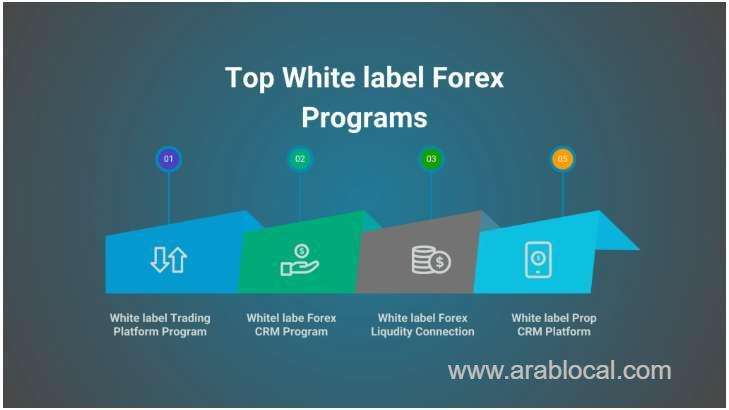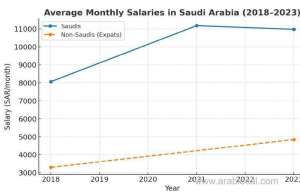For years, the forex affiliate industry has relied heavily on cost-per-acquisition (CPA) models, where affiliates earn a fixed fee for every new account opened through their referral link. While this model remains popular, its effectiveness is declining.
According to a 2023 report by FXPro Insights, CPA-driven campaigns now account for less of the total affiliate revenue, especially when compared withth previous years. This shift reflects a broader trend: traders are staying longer with brokers, and brokers are shifting toward performance-based revenue-sharing models that reward long-term value rather than one-time signups.
At the same time, the best forex affiliates are moving beyond traditional CPA programs and entering a new phase of monetization through white label and broker collaboration. These strategies allow affiliates to build branded trading services, offer customized experiences, and generate recurring income without relying solely on referral fees.
Let’s explore how established forex affiliates are leveraging these advanced tactics to build sustainable businesses.
Understanding White Label and Private Label Partnerships
To get into the category of the best forex affiliate, you need to understand white label, as it will become your go-to option once you understand how it works.
What Is a White Label Brokerage?
A white label brokerage allows an affiliate or third-party operator to offer a fully branded trading platform powered by another broker’s infrastructure. This includes:
-
A custom-branded trading terminal
-
Back-end integration with liquidity providers
-
Full client onboarding and compliance support
The affiliate retains full control over branding, pricing, and customer acquisition, while the broker handles execution, regulatory compliance, and risk management.
How Affiliates Can Act as Brand Extensions or Partial Operators
Rather than simply promoting a broker’s brand, affiliates can become brand owners themselves. For example, a forex education site might offer a white-labeled trading account under its own name, giving users a seamless experience from learning to live trading.
This model allows affiliates to:
-
Build brand equity in the financial space
-
Retain direct relationships with traders
-
Customize trading conditions and bonuses
Revenue Models: CPA, RevShare, Hybrid, and Profit-Sharing
Affiliates can choose from several monetization structures when entering a white label partnership:
|
Model |
Description |
Best for |
|
CPA |
One-time payment per client acquisition |
Short-term traffic monetization |
|
RevShare |
Percentage of broker’s revenue from client trades |
Long-term income from active traders |
|
Hybrid |
Mix of CPA and RevShare |
Balanced approach for growth and retention |
|
Profit Sharing |
Affiliate shares in the broker’s net profits |
High-volume, mature affiliate operations |
Benefits of Direct Broker Collaboration
Higher Lifetime Value Per Client Through Retention-Focused Branding
One of the biggest advantages of white labeling is the ability to retain clients long-term. Traditional CPA models reward signups but offer no incentive for keeping traders engaged. With a white label setup, affiliates can:
-
Offer loyalty programs and personalized support
-
Create branded educational content and signals
-
Implement retention strategies like auto-trading tools or mentorship
Greater Control Over User Experience and Onboarding
With full control over branding and platform customization, affiliates can design a seamless onboarding process that aligns with their audience’s expectations. This includes:
-
Custom landing pages and onboarding flows
-
Integrated tutorials and risk management tools
-
Personalized welcome emails and account activation support
A smoother onboarding experience not only improves user satisfaction but also increases the likelihood of first deposits and long-term engagement.
Ability to Tailor Promotions, Bonuses, and Product Features
Unlike generic broker referral programs, white label setups allow affiliates to customize promotions based on trader behavior and market conditions. For example:
-
Offering deposit bonuses for high-volume traders
-
Creating exclusive tournaments or demo contests
-
Adjusting leverage or spreads for specific asset classes
This flexibility makes it easier to attract and retain high-value clients who are more likely to generate ongoing revenue.
How to Approach Brokers for Partnership Opportunities
It is a known fact that to get partnerships, you will have to reach out to as many brokers as you can. But you can’t do that just by texting them if you really want growth. Here’s what you can do:
Qualifying Your Traffic and Proving ROI
Brokers are selective about white label partners. To stand out, you must demonstrate:
-
High-quality, targeted traffic (e.g., algorithmic traders, scalpers, or crypto-focused audiences)
-
Strong conversion rates from qualified leads to funded accounts
-
Retention metrics show that your audience stays active over time
Use analytics tools like Google Analytics, Hotjar, or Mixpanel to track user behavior and build a compelling case.
Demonstrating Added Value Beyond Clicks
Brokers want partners who bring more than traffic—they want value-added services such as:
-
Trading education and webinars
-
Signal services or auto-trading tools
-
Community engagement via Discord or Telegram
These elements increase trader satisfaction and reduce churn, making your partnership more attractive.
Negotiating Terms: Exclusivity, Payout Structures, and Data Access
When negotiating with brokers, focus on:
-
Exclusivity agreements to protect your brand positioning
-
Flexible payout structures (e.g., tiered RevShare based on volume)
-
Access to trader data for performance tracking and optimization
Transparency and alignment of incentives are key to building a long-term, profitable relationship.
Key Features Brokers Look for in an Affiliate Partner
High-Quality, Targeted Traffic Sources
Brokers prioritize affiliates who can deliver high-intent traffic from specific trader segments. Examples include:
-
Algorithmic traders seeking API access
-
Scalpers are looking for tight spreads
-
Crypto traders interested in derivatives
Generalist content is less valuable in white label partnerships.
Strong Domain Authority and SEO Footprint
Affiliates with a good domain authority (as measured by Ahrefs or Moz) are more likely to be considered for white label deals. This indicates:
-
Established brand credibility
-
Consistent content production
-
Organic search visibility
Engagement Metrics Like Time on Site and Email List Quality
Brokers want to see that your audience engages with your content. Key metrics include:
-
Time on site: Average of 3+ minutes
-
Email open rates 25%+
-
Newsletter subscribers: 10,000+ active contacts
These metrics demonstrate your ability to build and maintain a loyal community.
Track Record of High Retention and Low Churn
Brokers are increasingly focused on client lifetime value (LTV). If your referrals stay active for six months or more, you’re more likely to be considered for white label or RevShare programs.
Monetization Strategies Within White Label Models
White Label Models comes with great monetization options, but you need to know the right monetization strategies.
Brand Licensing Fees
Some brokers charge a setup or licensing fee for white label access. In return, you get exclusive use of the platform under your brand. This model works best for large affiliates with an existing audience.
Tiered Commission Structures Based on Deposit Volume
Affiliates can negotiate tiered RevShare models, where the commission percentage increases based on total client deposits or trading volume. For example:
-
20% RevShare for $0–$100,000 in monthly volume
-
30% RevShare for $100,000–$500,000
-
40% RevShare for $500,000+
This encourages affiliates to drive higher-value clients.
Upselling Proprietary Tools or Education Alongside the Platform
White label partners can bundle additional services to increase revenue, such as:
-
Premium trading courses or mentorship
-
Custom indicators or signal services
-
Risk management tools or portfolio analyzers
This not only boosts income but also enhances the overall value proposition for traders.
Challenges and Risks to Consider
While white-labeling offers many advantages, there are some challenges that you would need to consider before getting into it.
Increased Responsibility for Customer Support and Satisfaction
Unlike traditional CPA marketing, white label affiliates often handle first-line customer support. This includes:
-
Onboarding assistance
-
Technical troubleshooting
-
Dispute resolution
Investing in a support team or outsourcing to a third party is essential for maintaining trust and retention.
Legal and Regulatory Implications of Offering Branded Services
Offering a white-labeled trading service may expose you to regulatory scrutiny, especially if you’re marketing directly to traders in restricted jurisdictions. Always ensure compliance with local laws and broker guidelines.
Need for Technical Integration and Ongoing Maintenance
White label platforms require technical integration, including:
-
API connections for data tracking
-
Custom UI/UX development
-
Security and compliance updates
Ongoing maintenance is critical to ensure smooth operations and user satisfaction.
Conclusion: White Labeling Is the Next Evolution for Serious Forex Affiliates
The future of forex affiliate marketing belongs to those who are ready to move beyond CPA and embrace strategic broker collaboration and white label monetization. These models offer:
-
Higher lifetime value per client
-
Stronger brand authority
-
Recurring revenue streams
While the challenges are real, the rewards are substantial for affiliates willing to invest in quality, transparency, and long-term relationships.
If you're ready to take your affiliate business to the next level, consider white labeling, not just as a monetization strategy, but as a way to build a trusted, scalable financial brand that stands the test of time.








